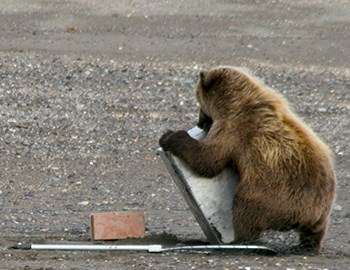
NPS / Kevyn Jalone Protecting Wildlife and Visitors Lake Clark's food storage regulations, outlined below, are intended to prevent bears and other wildlife from obtaining and habituating to food and garbage, thus protecting wildlife and park visitors alike. We strongly recommend that dishes and cooking equipment be securely stored. Clean and odor free items are not required to be stored in secure containers. We also recommend using bear resistant containers (BRCs) in all areas of the park, but do not require it. Ice chests, coolers, tents, dry bags, stuff sacks, plastic packing boxes (totes, action packers, etc), and unmodified kayaks are not generally approved as BRCs. The park offers BRCs for temporary use to the public. The containers are free of charge and are available at the park’s visitor center in Port Alsworth. For more information on this, and other, park policies please consult the Superintendent's Compendium. From the Superintendent's Compendium 2.10(d) Food storage: designated areas and methods. (1) Definition: A bear resistant container (BRC) means an item constructed to prevent access by a bear. BRC’s include:
(2) In designated areas - within ½ mile of the coast line of Cook Inlet including Chinitna Bay and Silver Salmon Creek, and within ½ mile of the shore line of Telaquana Lake, Crescent Lake, Turquoise Lake, Upper Twin Lake, Lower Twin Lake, Tazimina Lake, and Kontrashibuna Lake – food and beverages, food and beverage containers, garbage, and harvested fish must be stored in:
The Superintendent may, upon request, waive or modify food storage requirements in circumstances where compliance with these requirements is not possible, overly burdensome, and is consistent with public safety and wildlife conservation interests. (3) This provision does not apply to:
|
Last updated: April 6, 2021
